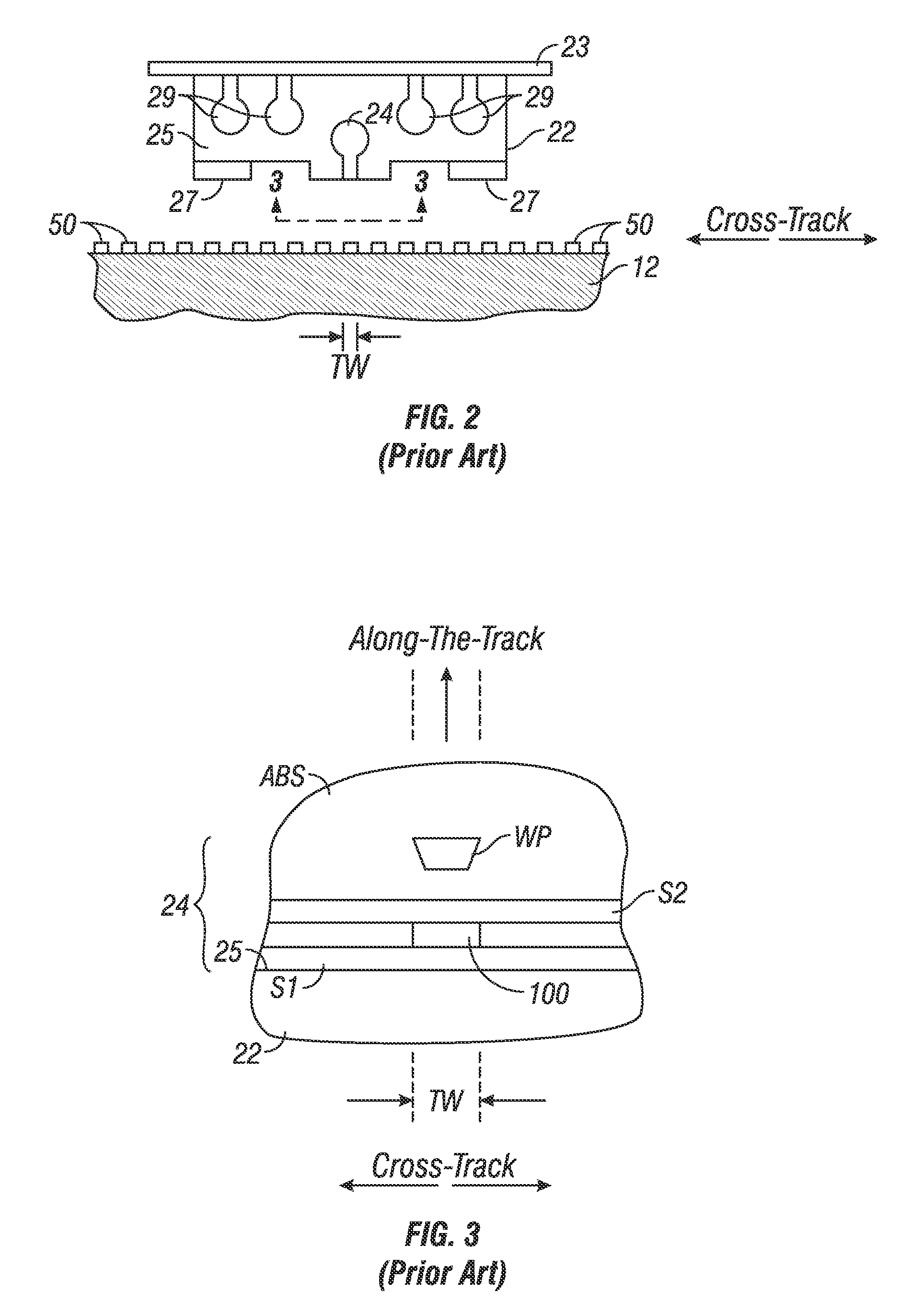Spin-torque oscillator (STO) with magnetically damped free layer
a free layer and spin-torque technology, applied in the field of spin-torque oscillators, can solve the problems of substantial low-frequency magnetic noise, cpp mr sensors are susceptible to current-induced noise and instability, etc., and achieve the effect of increasing the critical current, increasing the magnetic damping of the free layer, and increasing the critical curren
- Summary
- Abstract
- Description
- Claims
- Application Information
AI Technical Summary
Benefits of technology
Problems solved by technology
Method used
Image
Examples
first embodiment
[0036]FIG. 5 is a schematic of a magnetic field sensing system using a STO sensor 200 according to the invention. The system is illustrated as a magnetic recording disk drive with STO sensor 200 with its ABS facing the disk 250. The sensor 200 includes a stack of individual layers of a CPP-GMR or CPP-TMR sensor as previously-described with respect to CPP sensor 100. The disk 250 has a substrate 252 and a recording layer 254 that serves as the magnetic recording medium with magnetized regions depicted by the arrows directed toward or away from the ABS. As the disk rotates, the magnetized regions move in the direction of arrow 215 past the sensor 200. The recording layer 254 is depicted as a perpendicular magnetic recording medium with the regions magnetized perpendicularly to the plane of recording layer 254, but alternatively it may be a longitudinal magnetic recording medium with the regions being magnetized in the plane of recording layer 254. The STO sensor 200 has a first shield...
second embodiment
[0040]FIG. 6 is a schematic of a magnetic field sensing system using a STO sensor 200 according to the invention. The embodiment of FIG. 6 is like that of FIG. 5 except that the free layer 210 is not doped, but is magnetically damped by a damping layer 212. Damping layer 212 is in contact with the side of free layer 210 opposite the side of free layer 210 that is adjacent to spacer layer 230. Damping layer 212 in FIG. 6 may be a single layer formed of an antiferromagnetic material, like a Mn alloy such as PtMn, NiMn, FeMn, IrMn, IrMnCr, PdMn, PtPdMn and RhMn alloys in direct contact with free layer 210. For example, if free layer 210 is a CoFe ferromagnetic material with an intrinsic magnetic damping parameter of about 0.015, the addition of a 6 to 8 nm thick antiferromagnetic damping layer 212 formed of IrMn will increase the magnetic damping parameter to ˜0.1 [See N. Smith et al., Phys. Rev. B 81, 184431 (2010)]. Alternatively, the damping layer 212 may be a bilayer damping layer ...
PUM
| Property | Measurement | Unit |
|---|---|---|
| thickness | aaaaa | aaaaa |
| thickness | aaaaa | aaaaa |
| thickness | aaaaa | aaaaa |
Abstract
Description
Claims
Application Information
 Login to View More
Login to View More - R&D
- Intellectual Property
- Life Sciences
- Materials
- Tech Scout
- Unparalleled Data Quality
- Higher Quality Content
- 60% Fewer Hallucinations
Browse by: Latest US Patents, China's latest patents, Technical Efficacy Thesaurus, Application Domain, Technology Topic, Popular Technical Reports.
© 2025 PatSnap. All rights reserved.Legal|Privacy policy|Modern Slavery Act Transparency Statement|Sitemap|About US| Contact US: help@patsnap.com



